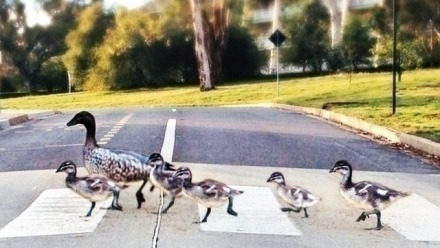Queen Victoria and Aboriginal people

 Queen Victoria and Aboriginal people
Queen Victoria and Aboriginal people
On 22nd January 1901, Queen Victoria died. She had reigned for sixty-three years, a record among British monarchs that is still unsurpassed. As a young woman Victoria had come to the throne in mid-1837, just six months before Australian celebrations of fifty years of British settlement. She died an old woman within weeks of the Australian colonies being formally federated. For British settlers, Queen Victoria was the centrepiece of a peculiarly colonial culture of monarchy. She was a focus for expressions of fealty and affection for the British crown and of belonging to the British race. As symbol, Queen Victoria could be fashioned for diverse causes and claimed by many different groups.
Aboriginal people in the Australian colonies, like Indigenous people elsewhere in the British world, developed and honed their own ideas about and traditions around Queen Victoria. They translated descriptions and representations of her as someone especially interested in their welfare, as a just and virtuous woman, as a protector of rights, and as benevolent and beneficent like a mother, for their own purposes. Some Aboriginal people came to see her – and the monarchy more generally – as an avenue of appeal and potential justice, and they turned to her as an alternative authority in their disputes with local settler governments. In 1846, for example, Tasmanian Aboriginal people exiled on Flinders Island in Bass Strait sent her a petition complaining about their treatment at the hands of a tyrannical overseer and expressing disappointment that the colonial authorities had failed to keep the promises they made. A decade and a half later, Aboriginal people living at the Coranderrk settlement near Melbourne sought to engage Queen Victoria in their campaign to gain security of tenure over their reserve. In 1863 they participated in the Governor’s levee held on the Queen’s birthday. They presented a loyal address and sent a cache of gifts to her. Through such gestures of public declaration and gift-giving, which drew on their own diplomatic practices, they sought to enter into a personal relationship with the Queen, a relationship which they hoped would be based on principles of reciprocity and mutual obligation.
Over time, a story took hold that claimed that Queen Victoria had given (back) Crown Land to Aboriginal people as compensation for their dispossession and in recognition of them as the original owners. For example, in 1881 William Barak told a visiting journalist that the land he and his people occupied at Coranderrk was ‘given them by Sir Henry Barkly (the governor) in the name of the Queen’. Eighty-five years later, when the NSW state government threatened to close the reserve settlement at La Perouse on the edge of Sydney, Hubert Timbery told reporters that he was not going to move because the land had been a grant to his people from Queen Victoria in perpetuity. The belief was so widespread and tenacious that in 1972 the Aboriginal activist Kevin Gilbert could publicly claim in The Australian newspaper that Queen Victoria was ‘the greatest, most generous image in the minds of Aboriginals’. Even more recently, in 2011 another activist, Michael Anderson, in a speech to the Occupy Movement in London explained that ‘the old people were told back then, and it came down through the generations, that Queen Victoria gave us our land and recognised us as independent people’.
Aboriginal people’s engagements with and interpretations of Queen Victoria – both during her reign and after her death – provide important insights into their intellectual thought and political agendas. At the same time, they offer new perspectives for cultural histories of Queen Victoria and the British monarchy. Aboriginal people’s representations of Queen Victoria -- their uses of her to make claims on settler governments and as a narrative device in the stories they told about British colonisation -- is part of the fabric from which her image and symbolism was made.
Dr Maria Nugent is a Research Fellow in the Australian Centre for Indigenous History.









